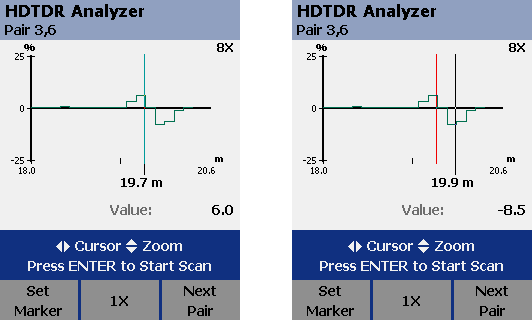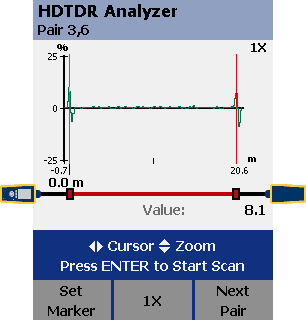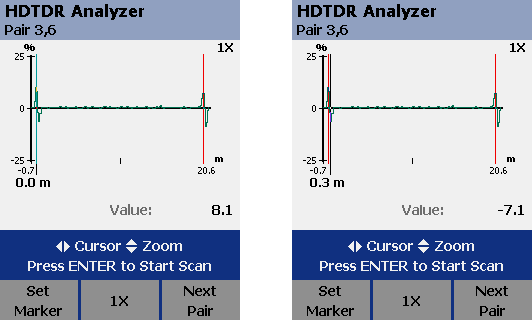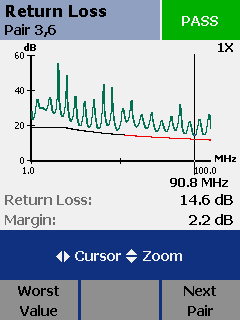HDTDR - DTX CableAnalyzer
|
Editor's note: Although this appears technical, it is worth understanding as it can save your company $1,000s / €1,000s. Are you looking to troubleshoot Return Loss problems? The following videos are available. Although titled "Category 6", the rules in these videos also apply to Category 5e, 6A, Class D, E and EA links.
Here we see an HDTDR trace taken from a Category 5e permanent link which had a Return Loss margin of 2,0 dB. It is a pass, but for this particular connector and cable vendor we expected to see larger margins. The HDTDR trace suggests that both the connectors and cable are the issue. When looking at an event, there are two types to consider. It can be either a bipolar or unipolar response. Bipolar response
Unipolar response
What you need to look for are responses greater than 3 % at the location of the connectors. If the response is a unipolar response, this task is simple. Move the cursor on the HDTDR trace to the event and read the value off the scale. If the event is a bipolar response, note the two peak values. In the example below, we see that the event rises to 8,1 % and then falls to -7,1 %.
This connection is not a significant contributor to the return loss in the link we tested. Lets look at the remote connection:

Our goal is for less than 3 %.
This indicates that the remote connection is not as good as the main connection. A visual inspection would be advisable. Inconsistent termination techniques are a common problem. More so when John terminates the main connector and Barry terminates the remote connector. In this case, we may wish to monitor Barry's workmanship.
Unfortunately, this example appears unclear. Ignoring the effect of the 3 dB rule (the grey part of the limit line) for a moment and moving the cursor to the left indicates that at 38 MHz, the margin is 2,3 dB. Almost the same as the margin at 90,8 MHz. That suggests a combination of connection(s) and cable issues. |









